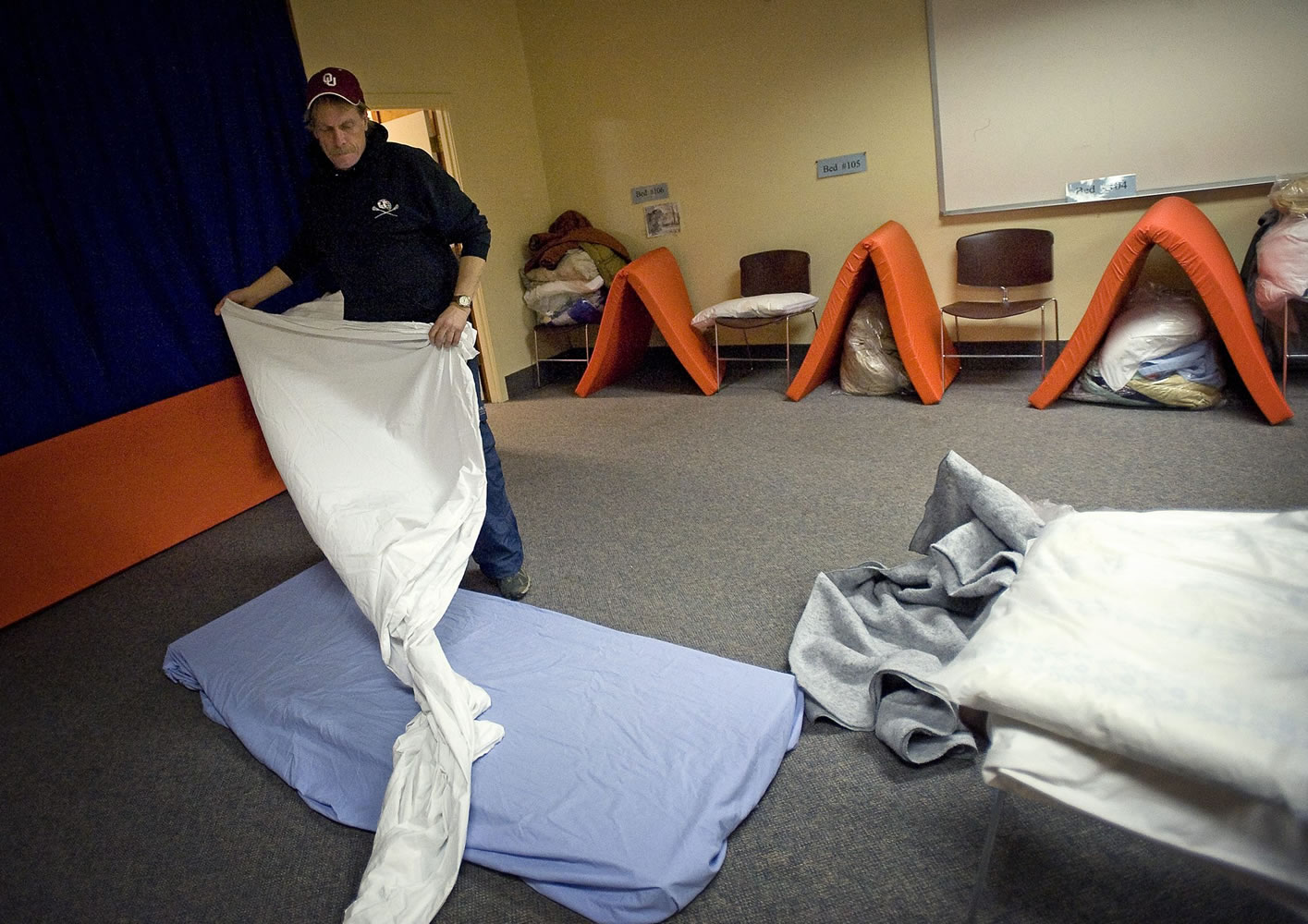Mirroring a national trend, the number of homeless people in Clark County has dropped, said Craig Lyons, executive director of the Council for the Homeless.
Lyons updated the Board of County Commissioners on Wednesday on the county’s 10-year homeless plan.
While he had good news to share, he also warned commissioners that he expects significant state and federal funding cuts in 2012 and 2013.
Projected funding, which includes local money and is estimated at $7.5 million this year, could drop to $6 million by 2013. Agencies will be relying more than ever on volunteers, Lyons said.
The goal of the 10-year homeless plan, which was adopted in 2005 in response to the Washington Homelessness Housing and Assistance Act, was to reduce homelessness by 50 percent.
Adjusting for a population increase, that goal has been met, Lyons told commissioners.
Based on an annual count conducted on the last Thursday in January, the number of homeless people — adults and children — has dropped from 1,523 in 2005 to 837 in 2011.
Clark County’s figures are lower than the state average; statewide, 30 people out of 10,000 are homeless. In Clark County, that number drops to 19.
Lyons told commissioners that many community programs take part in the annual January count, including Share Outreach and the Veterans Mobile Outreach.
“It’s not from lack of effort in trying to find people,” he said. “We hope (the decrease trend) will continue in our next count, which is coming up in six weeks.”
Nationwide, 636,017 people were homeless according to the January account, a 2.1 percent decline from 2010, according to a press release issued Wednesday by U.S. Department of Housing and Urban Development Secretary Shaun Donovan.
Veteran homelessness fell by nearly 12 percent; the number of homeless families fell 2.8 percent.
Five states — California, New York, Florida, Texas and Georgia — account for half of the nation’s total homeless population.
“It’s remarkable that in the wake of the most serious economic crisis since the Great Depression, we’re witnessing an across-the-board drop in homelessness,” Donovan said. “This tells us that the Obama Administration’s homelessness strategy is working and the results spur us to continue working to end homelessness in America once and for all.”
Lyons, who announced earlier that his last day as executive director will be Jan. 3, wasn’t quite that dramatic during Wednesday’s presentation.
Homelessness will never be completely eliminated, he said, but “the hopelessness of homelessness” can be solved by having sufficient community resources.
Lyons attributed the drop to the fact that the Council for the Homeless has emphasized prevention, such as providing temporary rent and utility assistance to help keep people in their homes. The number of permanent supported housing has increased, as has transitional housing.
Emergency shelters, such as the Winter Hospitality Overflow (WHO) shelters at St. Andrew Lutheran Church in Orchards and St. Paul Lutheran Church in downtown Vancouver, are crucial but aren’t ranked as a top priority because they aren’t a long-term solution, Lyons said.
“The hard part is helping the community realize that even though we don’t put an emphasis on emergency shelter, we need it,” Lyons said.
“We see people seeking more emergency shelter because we don’t have enough prevention services, permanent and transitional housing,” he said.
Lyons told commissioners the number of “turnaways,” or people who called the emergency shelter clearinghouse (360-695-9677) but were turned away, has dropped. Between September 2008 and August 2009, approximately 3,000 people were turned away. Between September 2010 and August 2011, approximately 2,500 people were turned away.
Stephanie Rice: http://www.facebook.com/reporterrice; http://twitter.com/col_clarkgov;stephanie.rice@columbian.com.“>href=”http://twitter.com/col_clarkgov;stephanie.rice@columbian.com.”>http://twitter.com/col_clarkgov;stephanie.rice@columbian.com.



